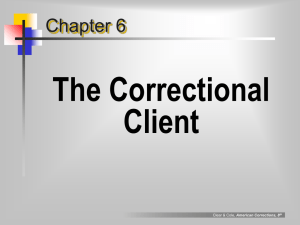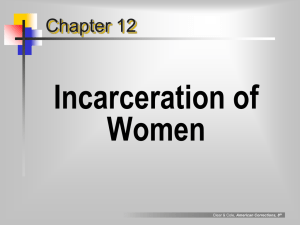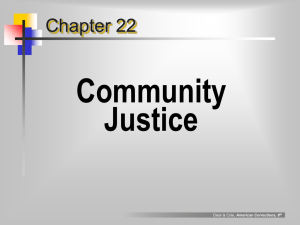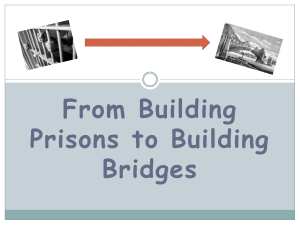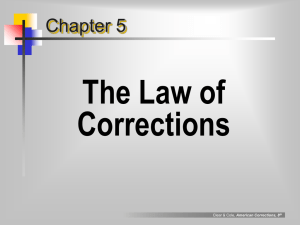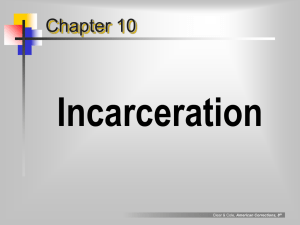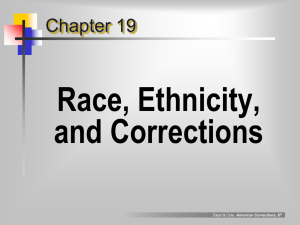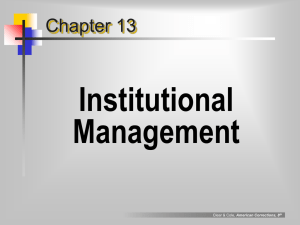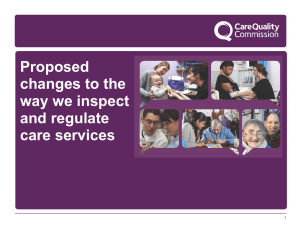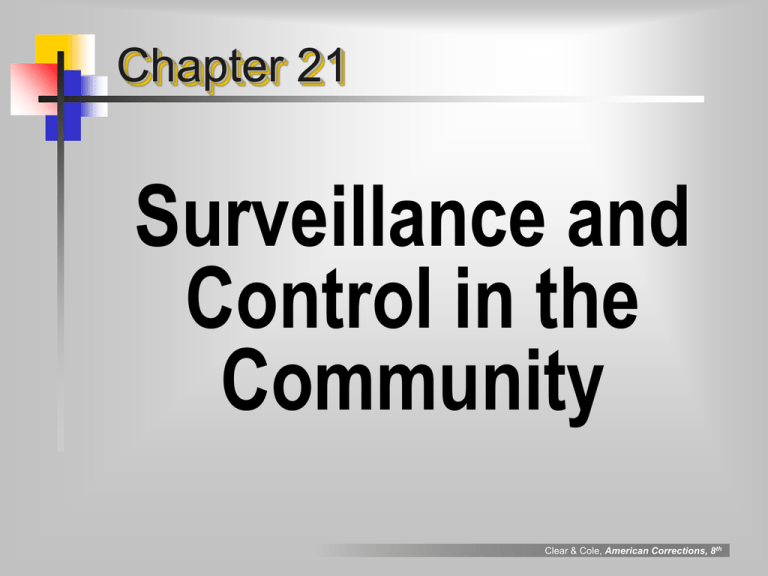
Chapter 21
Surveillance and
Control in the
Community
Clear & Cole, American Corrections, 8th
The Goals of Surveillance
The Techniques of Surveillance and Control
Drug Controls
Electronic Controls
Human Surveillance
Programmatic Controls
Control: A Double-Edge Sword
Social Control and Personal Liberty
The Politics of Surveillance and Community
Protection
The Limits of Control
Technology
Human Responses
Moral and Ethical Limits
Toward Acceptable Community Control
Clear & Cole, American Corrections, 8th
community surveillance
surveillance
is a fast-growing &
potentially troublesome aspect of
corrections
caveat:
personal liberty is
precious; it ought not to be
jeopardized by inordinate
controls over our autonomy.
Clear & Cole, American Corrections, 8th
purposes of surveillance
aims of
surveillance
protection of
community
“enables”
offenders to be
held in community
(rather than
prison)
enables
monitoring of
treatment
programs
Clear & Cole, American Corrections, 8th
surveillance & control techniques
drug controls
electronic
controls
controls
programmatic
controls
human
surveillance
Clear & Cole, American Corrections, 8th
drug controls
Antabuse
causes nausea
when
combined
with alcohol
Depo-Provera
‘chemical
castration’ drug
that eliminates
sexual response in
males
R
x
Thorazine
used to control
violent or aggressive
behavior caused by
psychiatric
problems
Prozac
decreases
negative emotions
associated with
depression
Clear & Cole, American Corrections, 8th
electronic controls
electronic
monitoring
electronic ‘fence’
establishes a perimeter
beyond which a client may
not venture without being
shocked
e.g., home arrest
anklets
e.g.
video screen
telephones
live interview with
client ‘face to face’
remote video
surveillance
without telephone
lines (Big Brother?)
Clear & Cole, American Corrections, 8th
human surveillance
use ‘surprise’
visits;
increase
number of
contacts
appear
un-announced
e.g.
broaden
location of
contacts
increase
randomness
of contacts;
avoid ‘routine’
Clear & Cole, American Corrections, 8th
Global Positioning Systems (GPS)
Requires
the offender to carry a “bag"
that transmits a signal to a satellite
identifying the person’s location at all
times.
Clear & Cole, American Corrections, 8th
programmatic controls
The
most widely used technique of
surveillance & control are the established
elements of treatment programs.
drug testing
urine sampling
hair testing
systems of surveillance and control
e.g., Vermont’s Relapse Prevention Program
trains (sex) offender to look for signs of relapse
incorporates selected individuals in community,
who are also taught to look for same signs
Clear & Cole, American Corrections, 8th
Surveillance and Crime Rates
The
Myth: When people are watched
more closely by correctional
authorities they are less likely to
engage in crimes.
The Reality: A host of studies in a
variety of settings finds that increased
surveillance is associated with higher
rates of being returned to prison for
misbehavior, but not lower rates of
arrest for criminal conduct
Clear & Cole, American Corrections, 8th
problems of control
violates
privacy
stress on
family
disadvantages
change in
social
priorities
increased
government
control
Clear & Cole, American Corrections, 8th
politics of surveillance and
community protection
Issue
has turned normal “conservative”
and “liberal” politics upside down!
conservatives normally OPPOSE
government intervention into personal
affairs.
but, in interest of SOCIAL CONTROL, they
favor intervention here.
liberals
normally SUPPORT government
intervention in interest of social good.
but, in interest of INDIVIDUAL LIBERTY, they
oppose intervention here.
Clear & Cole, American Corrections, 8th
constraints on surveillance and
control
constraints
technology
requires support
& maintenance,
which may be
lacking in
correctional
systems
human
responses
many correctional
professionals &
offenders may
resist new controls
moral & ethical
limits
broad controls are
inconsistent with
American views of
freedom & liberty.
high price to pay for
safety.
Clear & Cole, American Corrections, 8th
test of ‘acceptable’ controls
criteria
for gauging whether surveillancecontrol techniques are appropriate
Is it truly being used in lieu of prison?
Is it really necessary to control offender, or is it
being used to mollify public?
Would less intrusive method suffice?
Are indirect intrusions into lives of innocent
members of community being minimized?
Will surveillance-control be reduced if offender
shows self-control?
Clear & Cole, American Corrections, 8th

